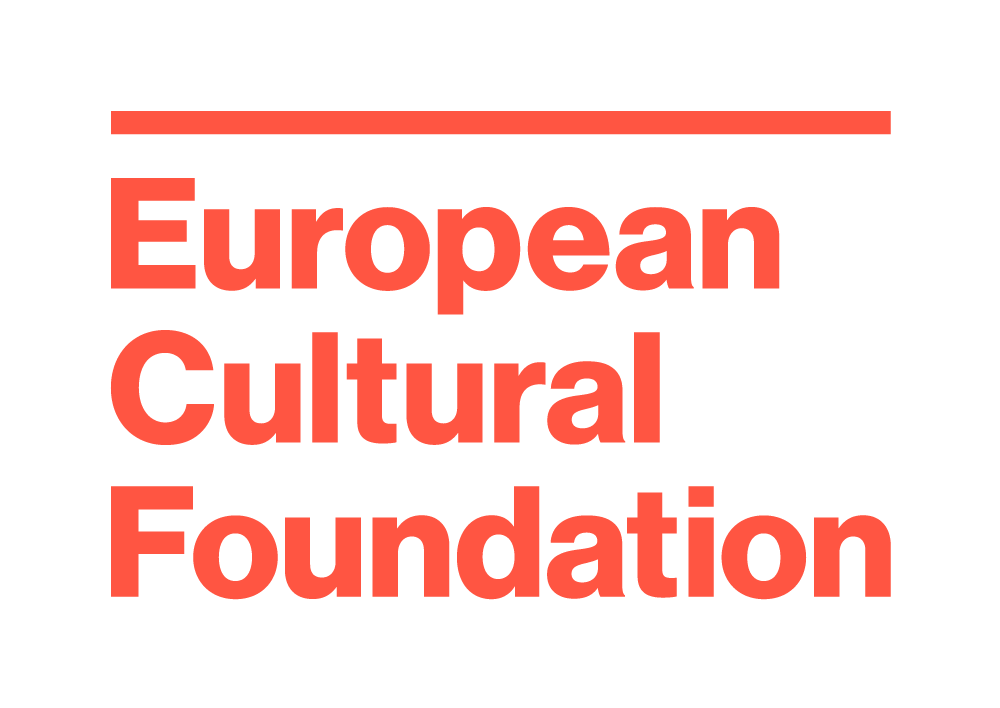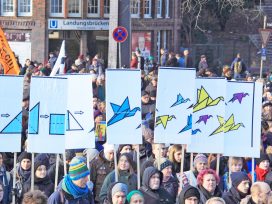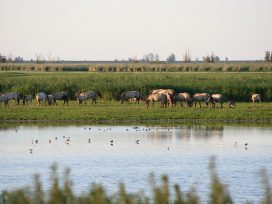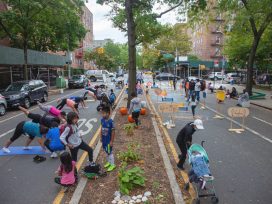The school as commons
Housing estates can accommodate many people, but they rarely bring residents together, creating instead an atomized mass of individuals. However, public space can be cultivated, even among blocks of flats. And the school can play a key role in creating a shared environment and civic involvement, as seen in the example of a project in Košice, Slovakia.
Ťahanovce is a typical functionalist housing estate built in the late 1980s on the outskirts of the city of Košice. Even though it is home to more than 22,000 people, the public space is far from vibrant. Most people spend their time away from the estate, which not only causes regular traffic jams on the only access road to the city centre, but also prevents them from forming a bond with the public space.
For many people, interest in public space is reduced to being able to find a parking space as close to home as possible, although, of course, many local residents do care about the housing estate and actively seek to improve it. In fact, it is not only public space but also many public institutions that rely on citizens’ support.
This relationship of mutual support is based on necessity and exists within traditional institutions and hierarchies. Therefore, as the initiators of the School and Community (ŠAK) project, we have been aware of the need to forge new forms of cooperation between public institutions and active citizens, since we believe that such a relationship has the potential to improve the quality of public space as well as help develop civil society.
The concept of shared values
Our starting point was the idea that the school as an institution has great potential in terms of public space and the material resources it can offer to the public. However, the school is often a closed fortress where the sacred act of educating children takes place behind its ramparts.
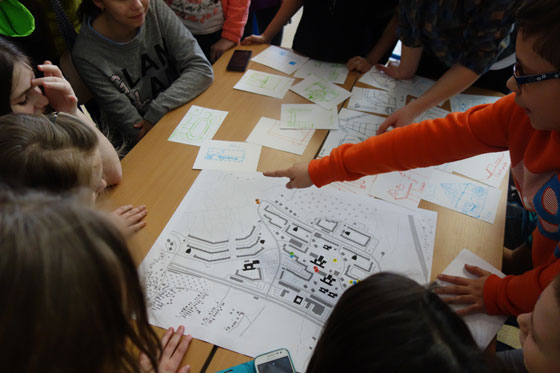
A scene from the local school on the outskirts of Košice. Photo: Zuzana Tabačková.
Members of the public are normally allowed into the school only when repairs are needed – i.e. when desks or walls need a new coat of paint – which the school itself can’t afford due to underfunding. Nevertheless, the school plays a much more active role in the community, one that tends to be forgotten in the realities of day-to-day life.
It provides a large proportion of the estate’s residents – parents, pupils and teachers – with the opportunity for daily contact, as one of the last sites on the estate where a community still exists. In addition, the school courtyard is a popular place for sports for the entire estate, despite being fenced off and its gates being locked.
In seeking a new form of improved cooperation between the school and the public, we have chosen the concept of commons as our starting point. In this case the concept of commons, usually translated [into Slovak] as “commonly shared goods”, need not carry the full range of these implications. Rather, we are interested in transforming the perception of public goods that are available at a given site (such as the school) into one of shared goods; that is to say goods that are shared both in a physical sense and as a joint responsibility.
The key to our project is achieving an understanding that responsibility for the common environment is also shared rather than alienated from the inhabitants by some anonymous power of the state or municipality. Alongside students, the school can thus be also used for extracurricular activities by local residents who are interested in jointly creating something, practising a foreign language, building a community garden, or doing sports in the school yard. By sharing the site, they contribute to the material improvement of the property in that they widen the choice of extracurricular activities and informal education which communal life can generate at the school.
A site of emerging society
However, the school has a lot more than this to offer. It can, at least in part, become the agora, the mythical public sphere where society is born. Therefore we regard the connection with the school environment as the first step towards instigating an active wider community in the housing estate. The school can be a relevant player in initiating various forms of discussion or conversation while, at the same time, providing the physical space for these activities.
Although physical space is a crucial element in building democracy, it is in very short supply in contemporary cities and housing estates. This lack of space is one of the reasons local communities have been increasingly turning to social media as a means of organizing their activities. The Ťahanovce estate boasts an active online community of local residents who can air grievances about the state of the estate, but also exchange tips on hairdressers or organize rubbish collections in the local forest. Forging links within this community can result in the formation of interest groups in real life and an altered perception of the word “political” in local development. Opening up the school thus also creates public space.
One example is the joint involvement in building infrastructure for cycling, planned over the next three years and initiated by the local municipality. The heavy traffic on the main artery leading to the city centre is unsustainable, given that buses currently provide the only public transport to the estate, albeit without designated bus lanes.
The situation could be somewhat alleviated if more people used bicycles. As experience in other cities shows (Auto*mat in Prague or Brno na kole in Brno) a cycling movement initiated by a small group often gains community momentum. The school can serve as the site for launching and sustaining such a movement and its premises can also serve as a community bike workshop where the residents can share tools and know-how for bike repairs and maintenance.
Developing social centrality
Strengthening the social position of the school in the community is also important from the point of view of developing social centrality, which is how philosopher and geographer Henri Lefebvre refers to the affiliation of people to the centre of urban activities. The lack of a centre is largely responsible for a lack of interest in public life because an authentic coming together of a community can come about only at and around a specific site.
Housing estates typically lack centrality in this sense of the word. It is in estates that a bond between the school and the community is most needed because this is where its potential to change the public space and create social centrality is at its greatest. It is also worth noting that the physical location and shape of the building plays an important role. The school in Ťahanovce is located at the centre of the estate, so it is naturally predisposed for the role of social centre. Nobody lives far away from the school and hundreds of people can see the activities in the school courtyard from their homes on a daily basis.
However, rather than creating a new reality, the ŠAK project aims to foster dialogue between existing stakeholders and seek new forms of collaboration that will benefit citizens. This is why we regard public institutions as partners in sharing. Municipal authorities and the school play a key role in community development and are certainly responsible for responding to many needs.
Yet what is often lacking in these institutions is a chance to communicate with the residents in a clear way to ensure mutual understanding. Thus individuals often find themselves in a position when they are keen to get involved but don’t understand the mechanisms for joining the discussion. In this respect, the school as a learning environment can provide skills and knowledge as well as a way of connecting individuals and networks that already exist in the housing estate.
Published 22 February 2017
Original in Slovak
Translated by
Julia Sherwood
First published by A2 9/2016
Contributed by A2 © Zuzana Révészová, Zuzana Tabačková / A2 / Eurozine
PDF/PRINTPublished in
In collaboration with
In focal points
Newsletter
Subscribe to know what’s worth thinking about.
Related Articles
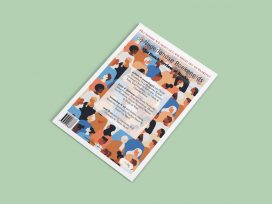
On making commons concrete
The Dutch Review of Books 2/2021
‘The Dutch Review of Books’ presents: the commons, vying for legitimacy between state and capitalism; the void of societal responsibility for #MeToo; and African oral traditions evident in rap music.
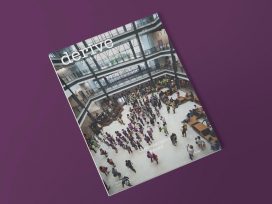
Democratic ‘Third Places’
dérive 10–12/2020
Urbanist magazine ‘dérive’ on emancipating Brazilian museology; the potential for Polish cultural centres; Swiss commons as a transferable prototype; and post-explosion Beirut.
